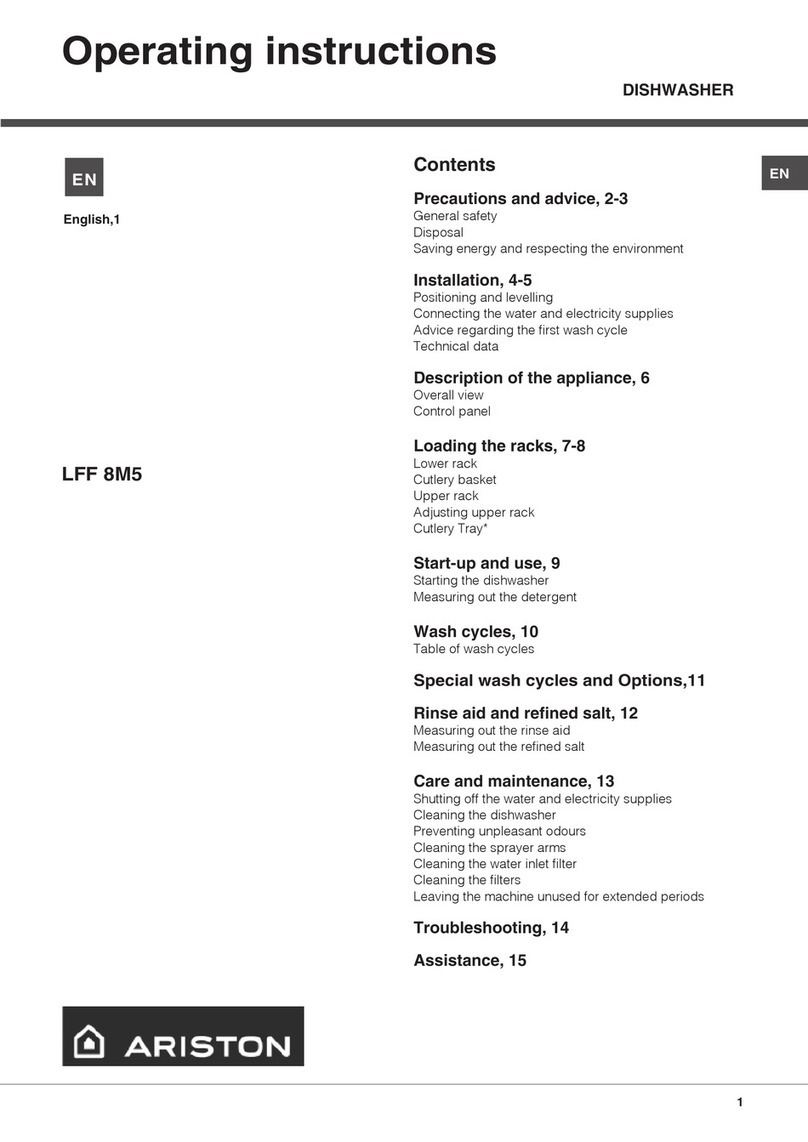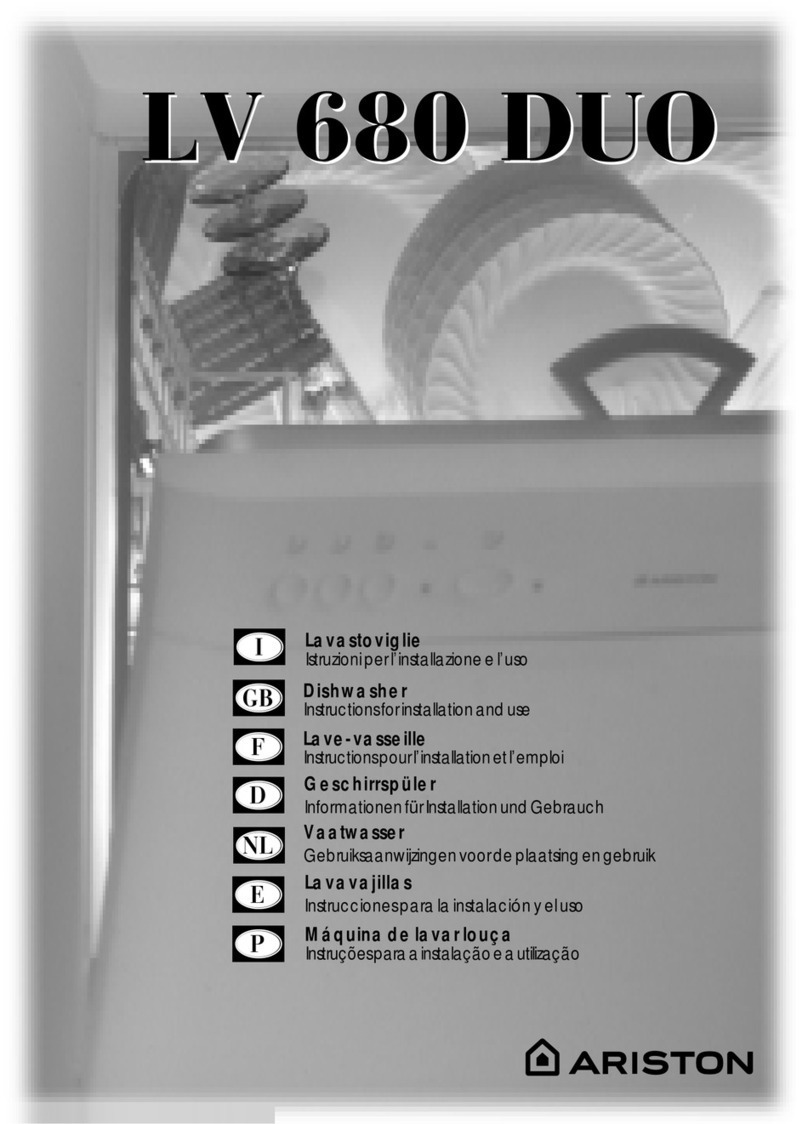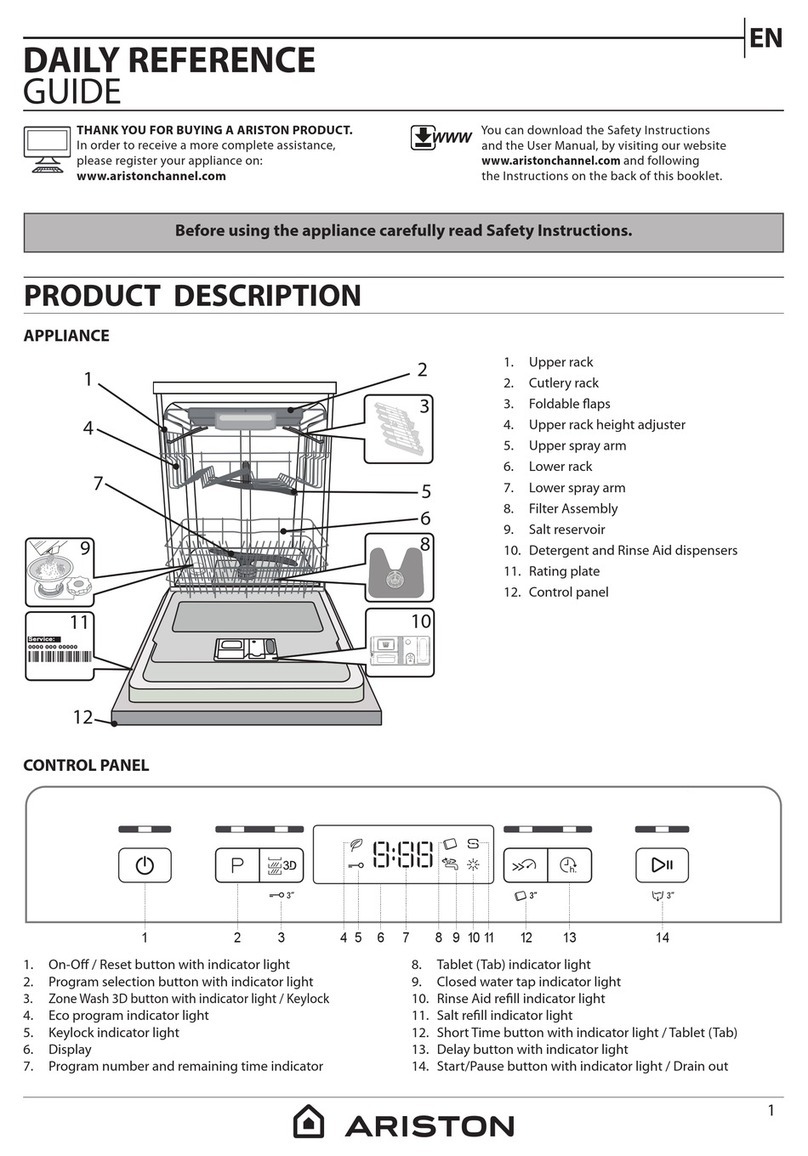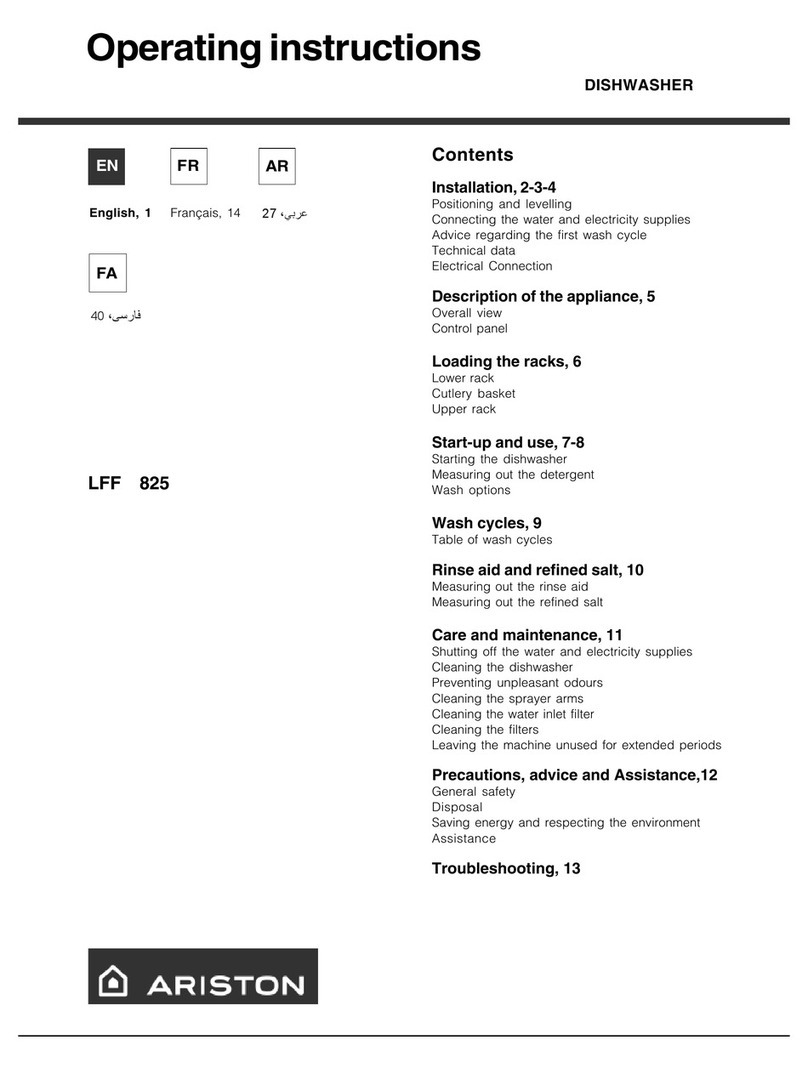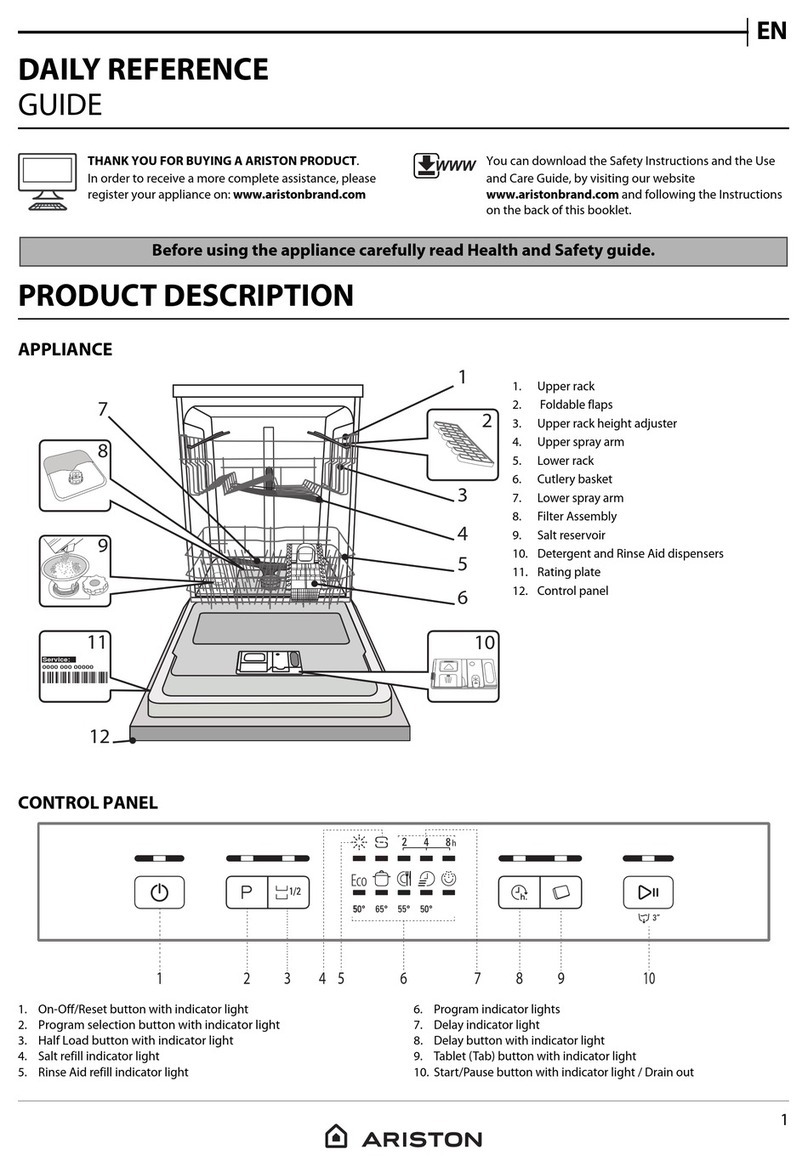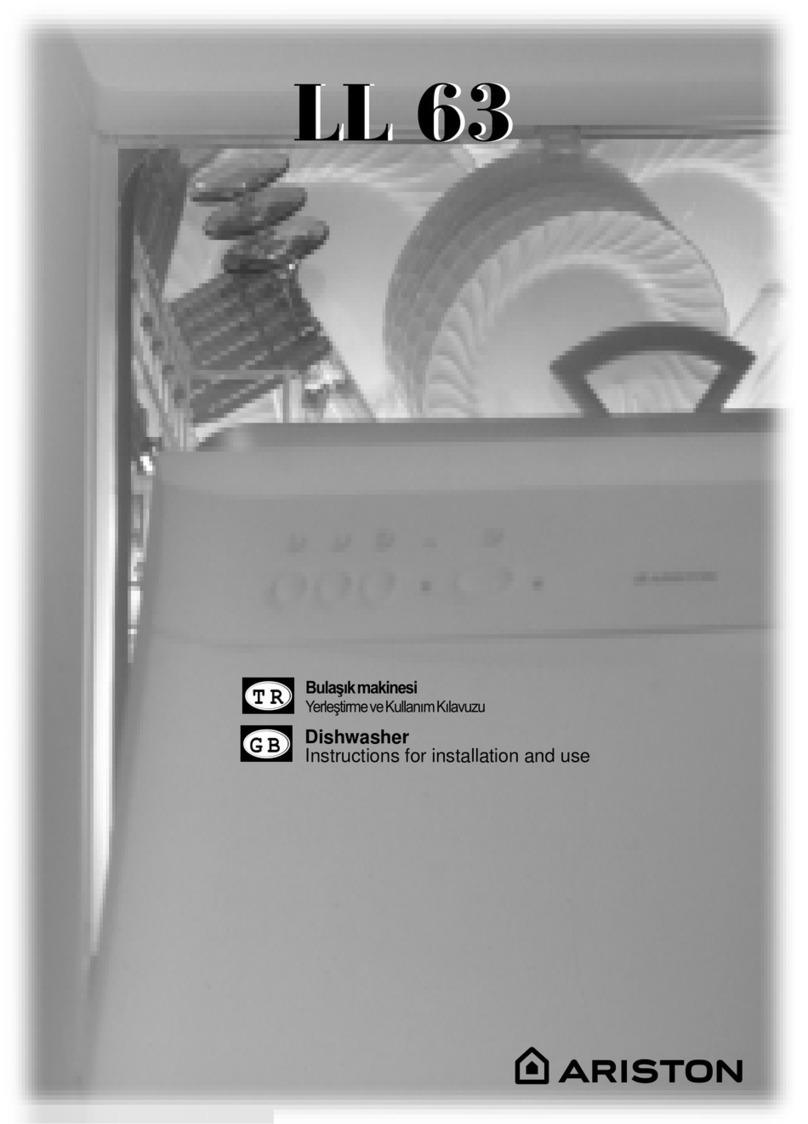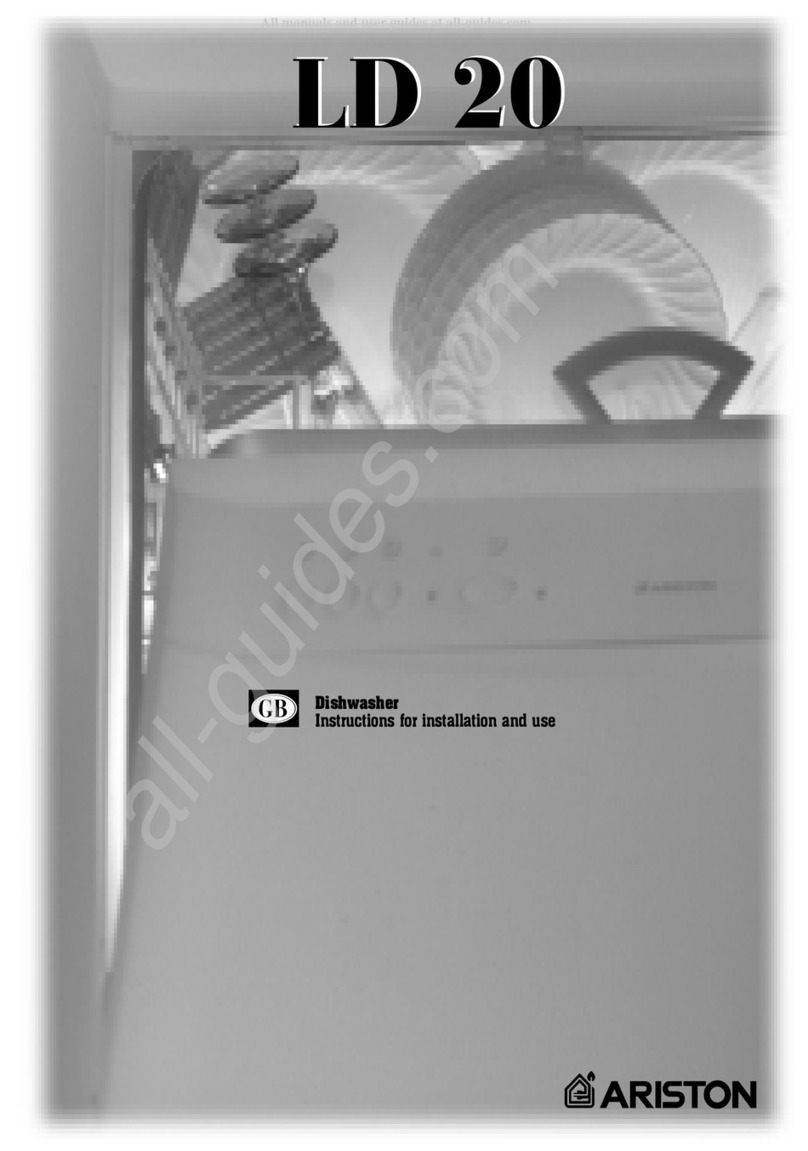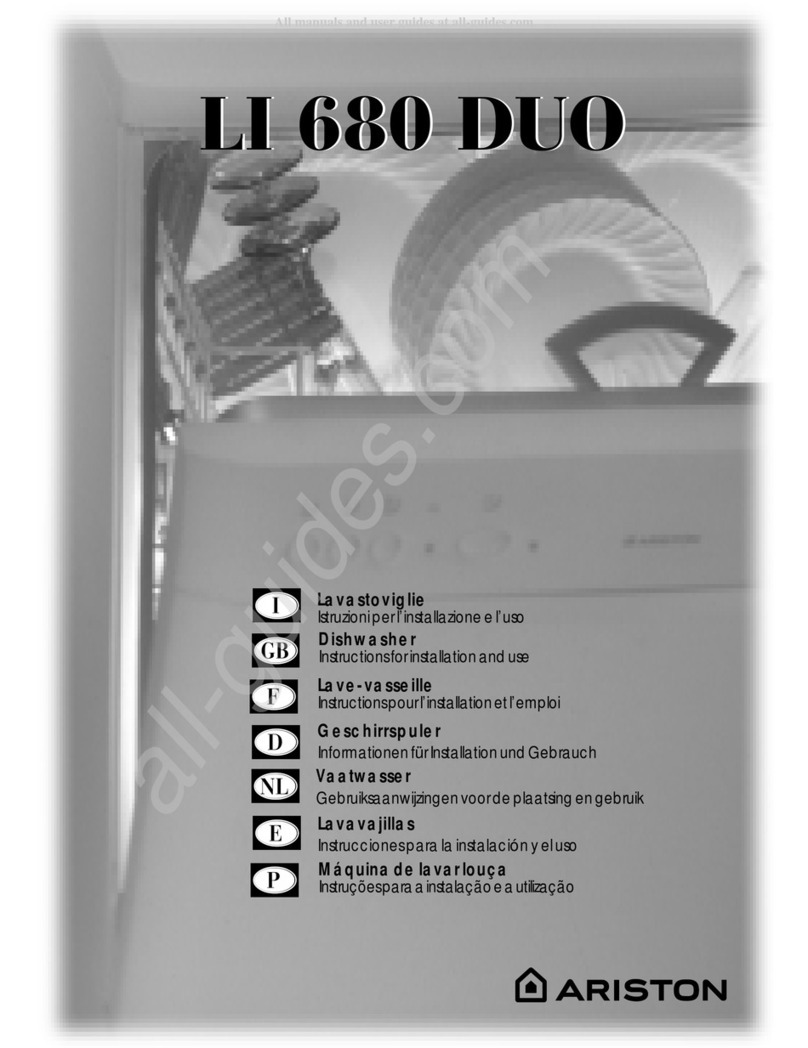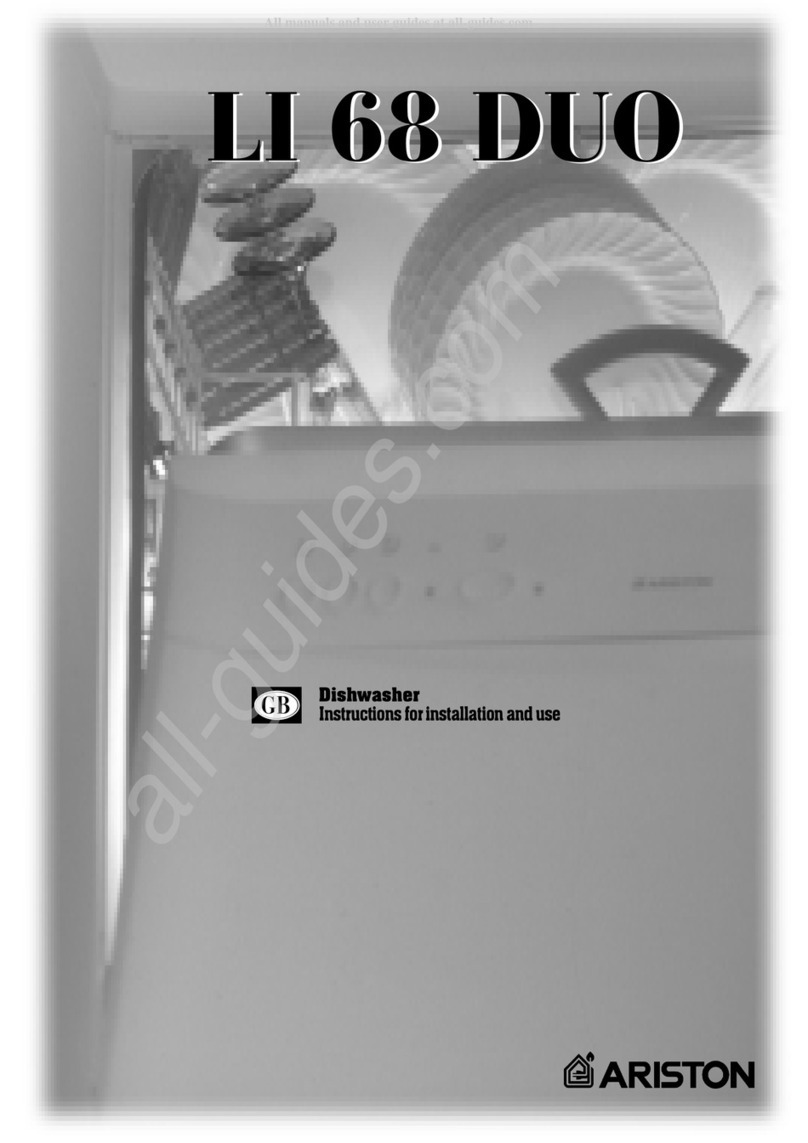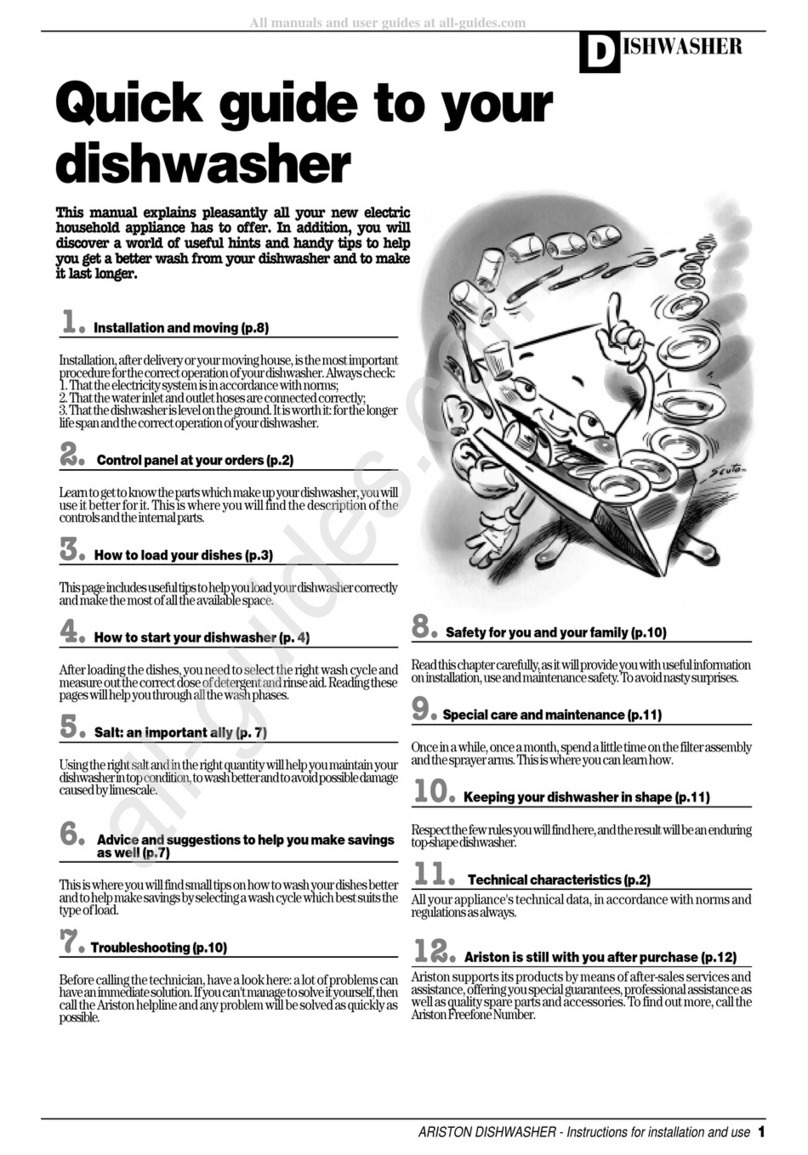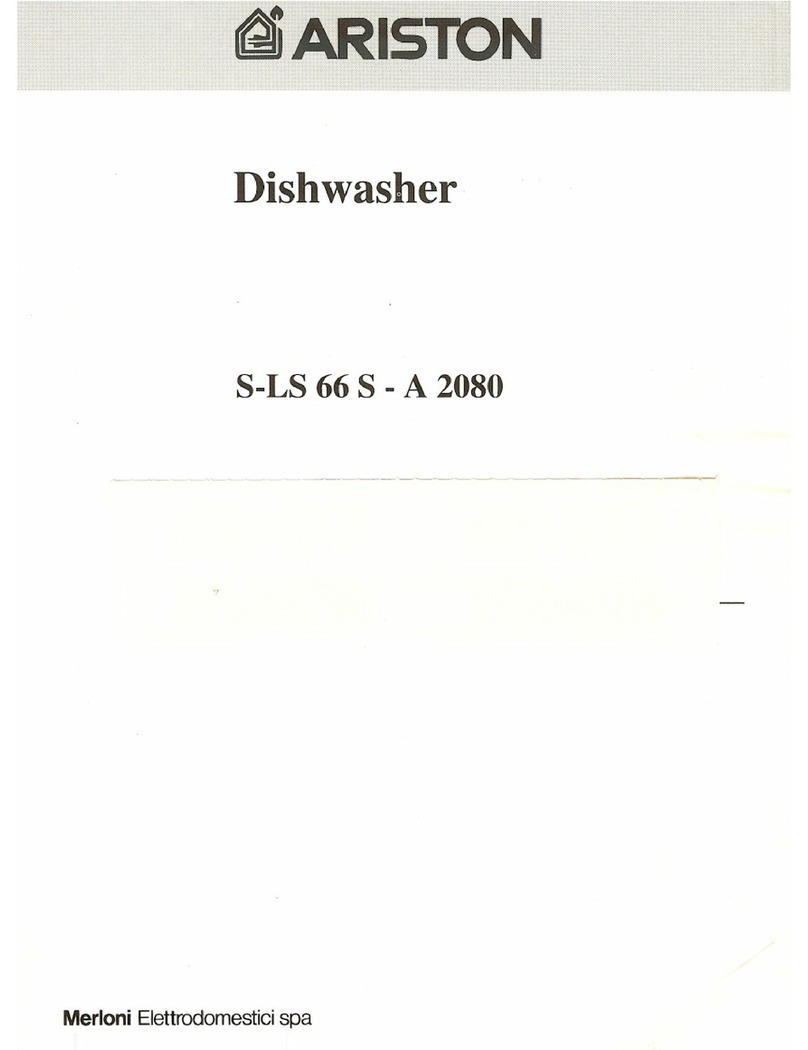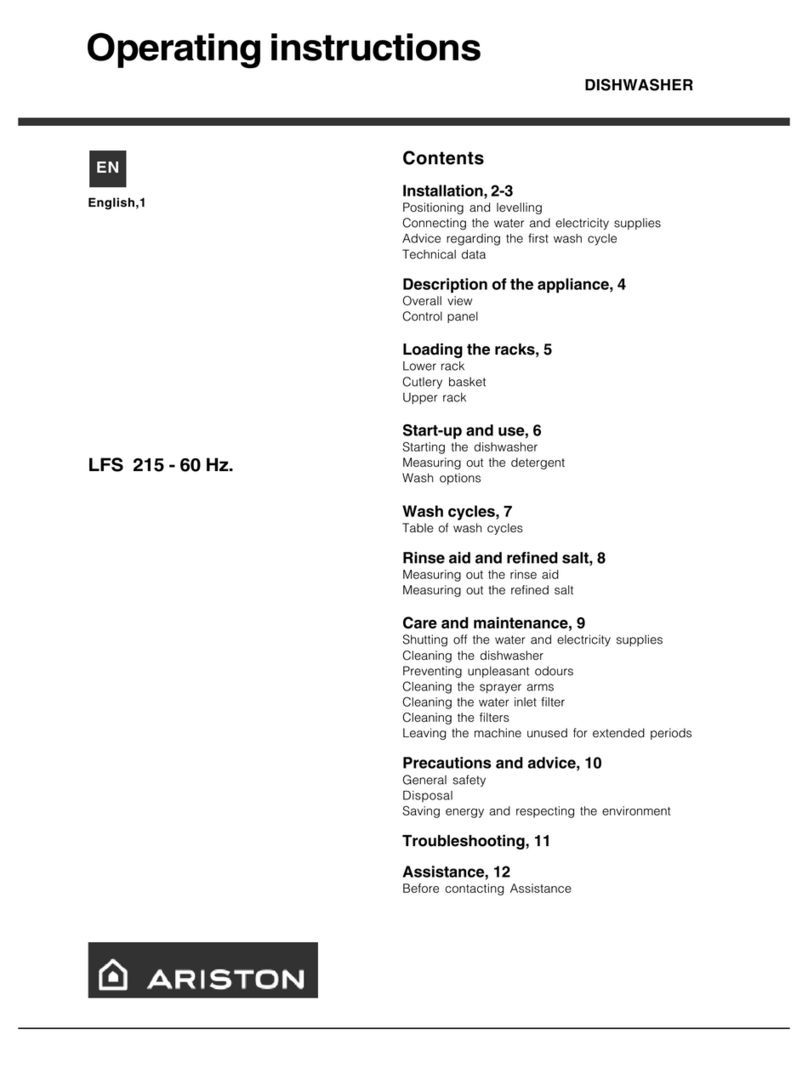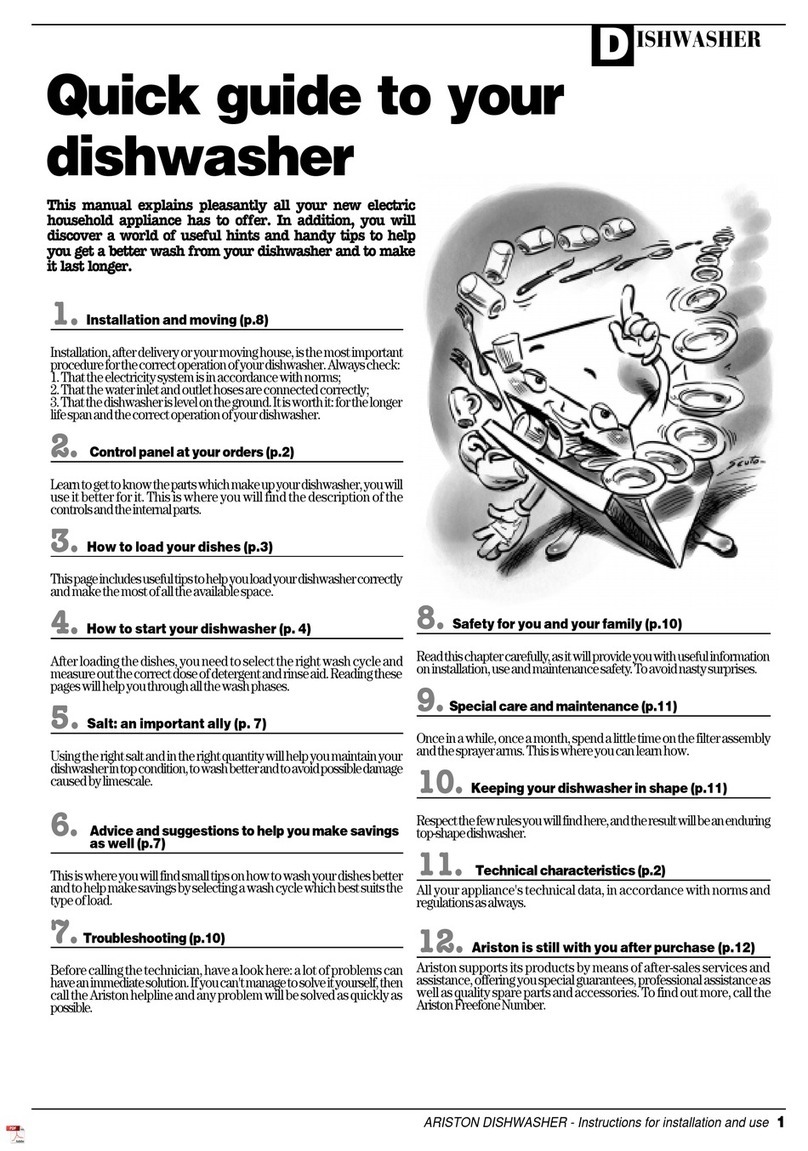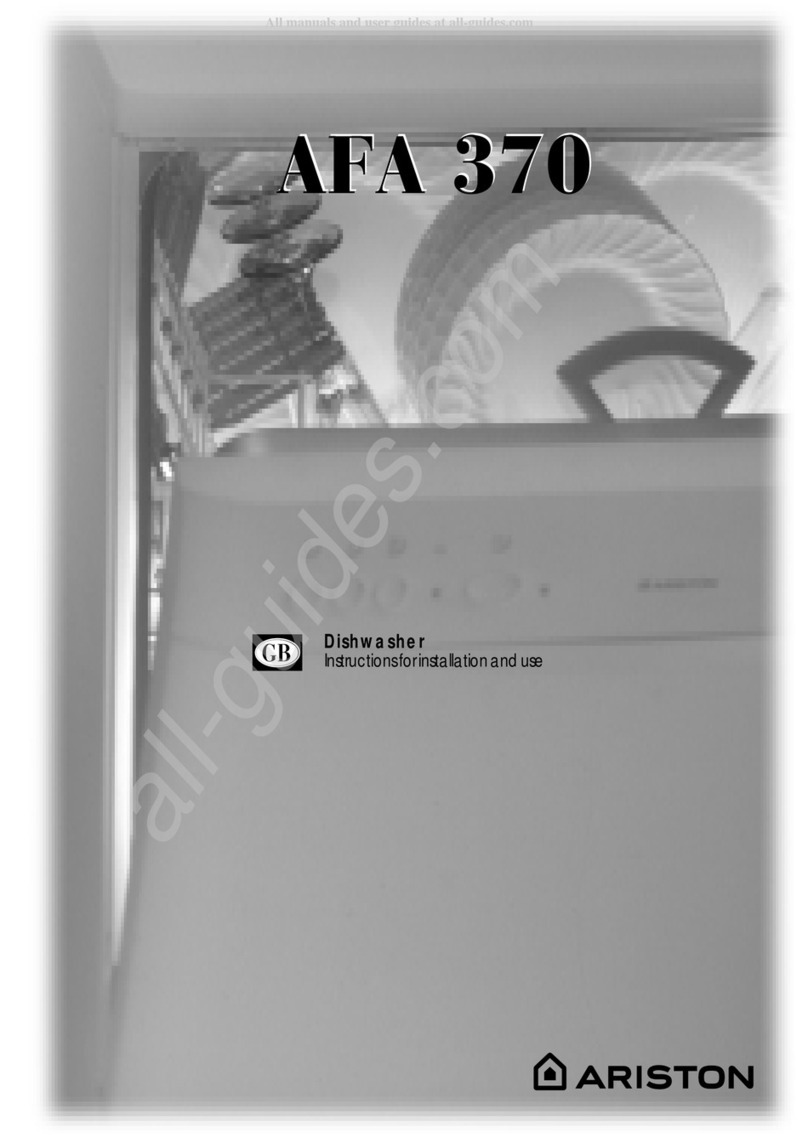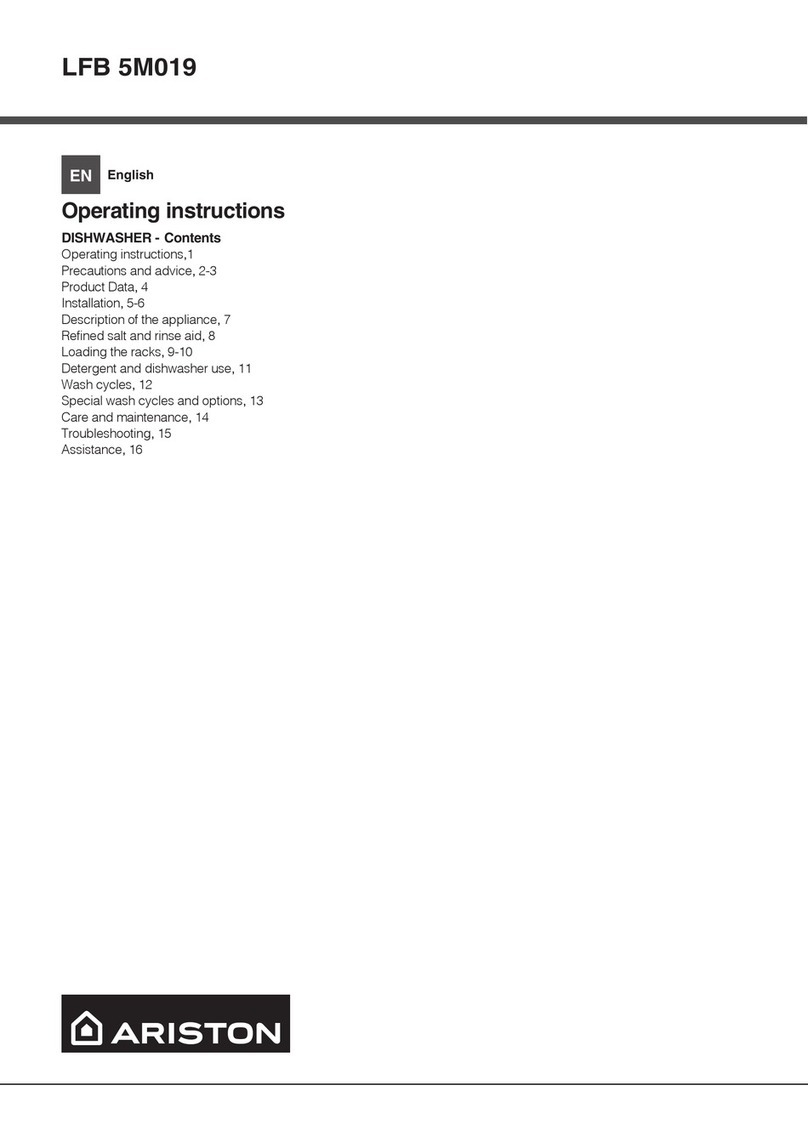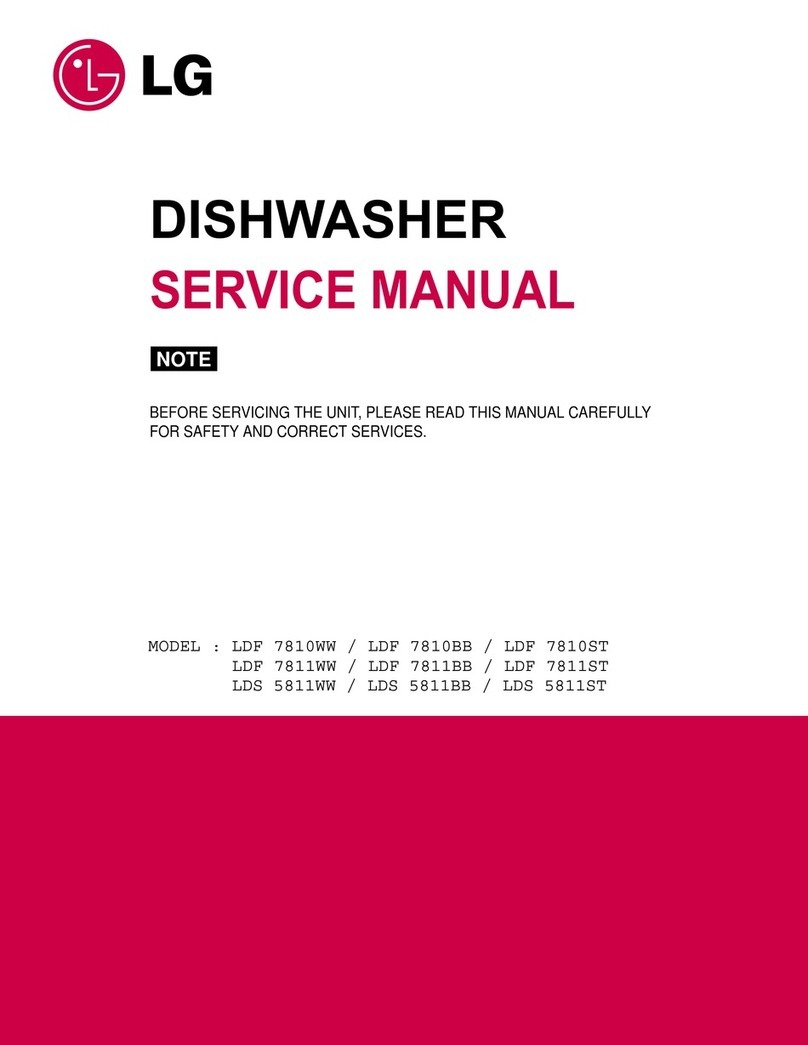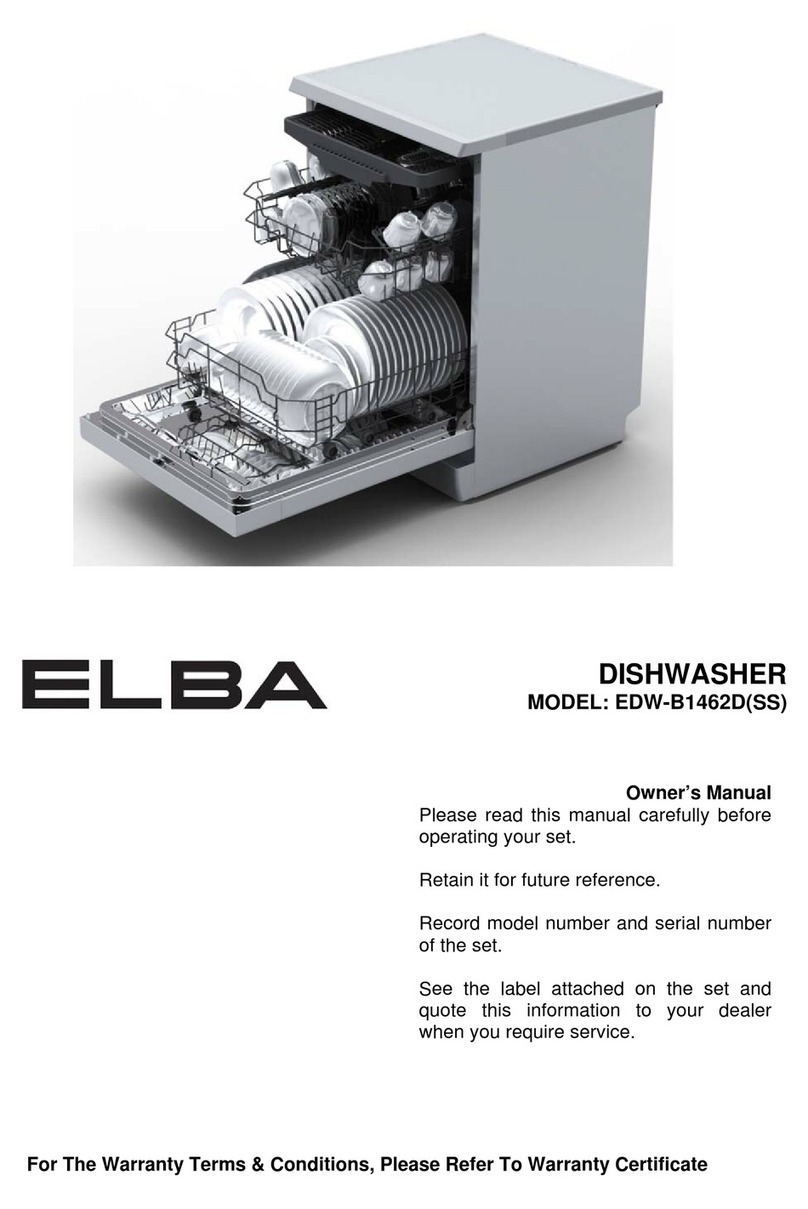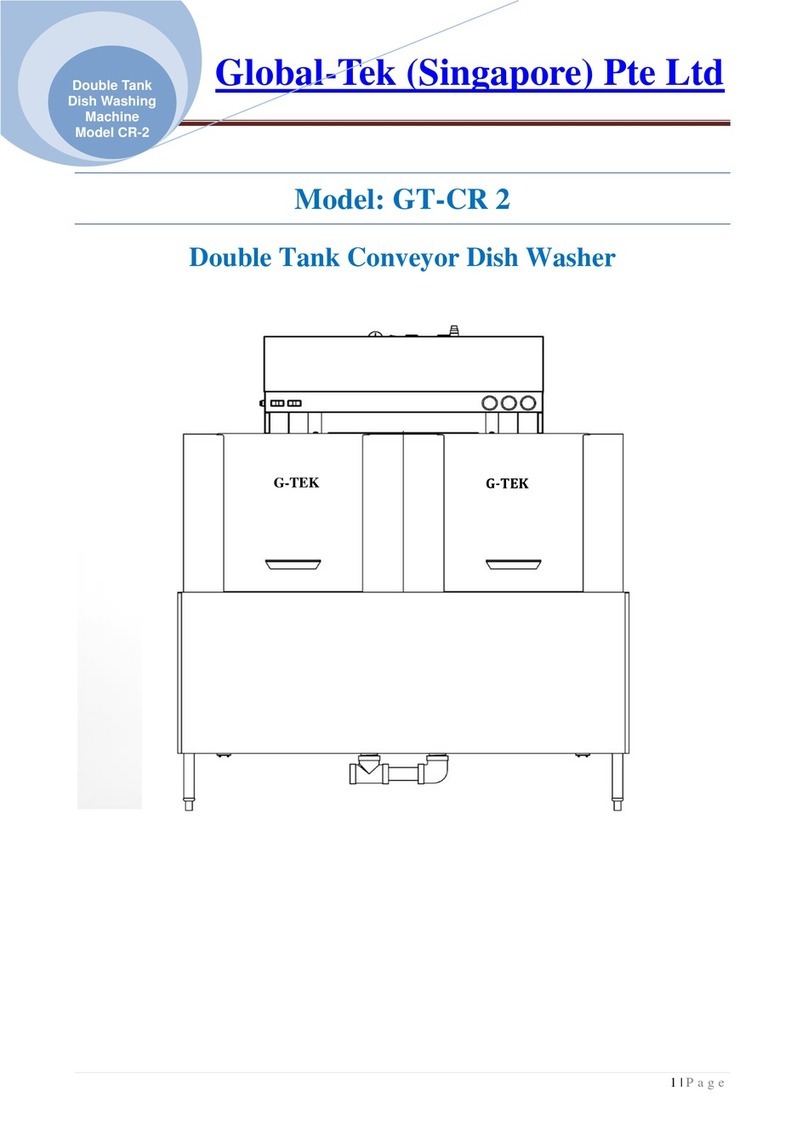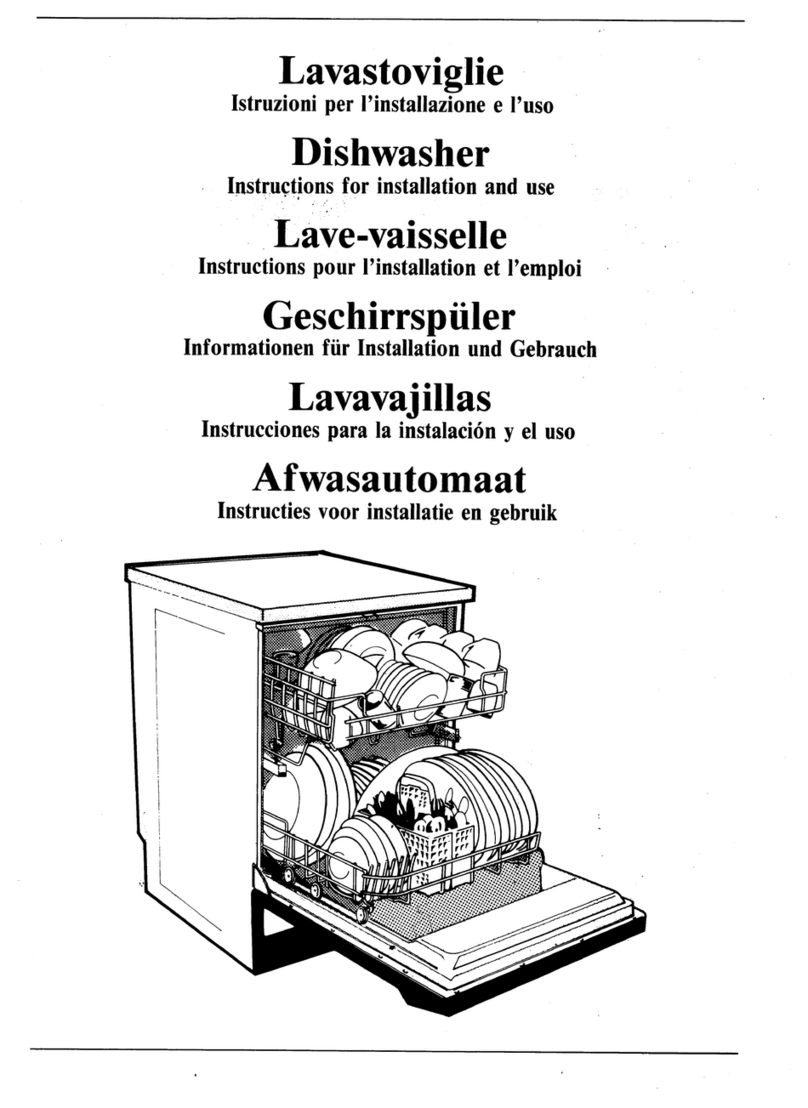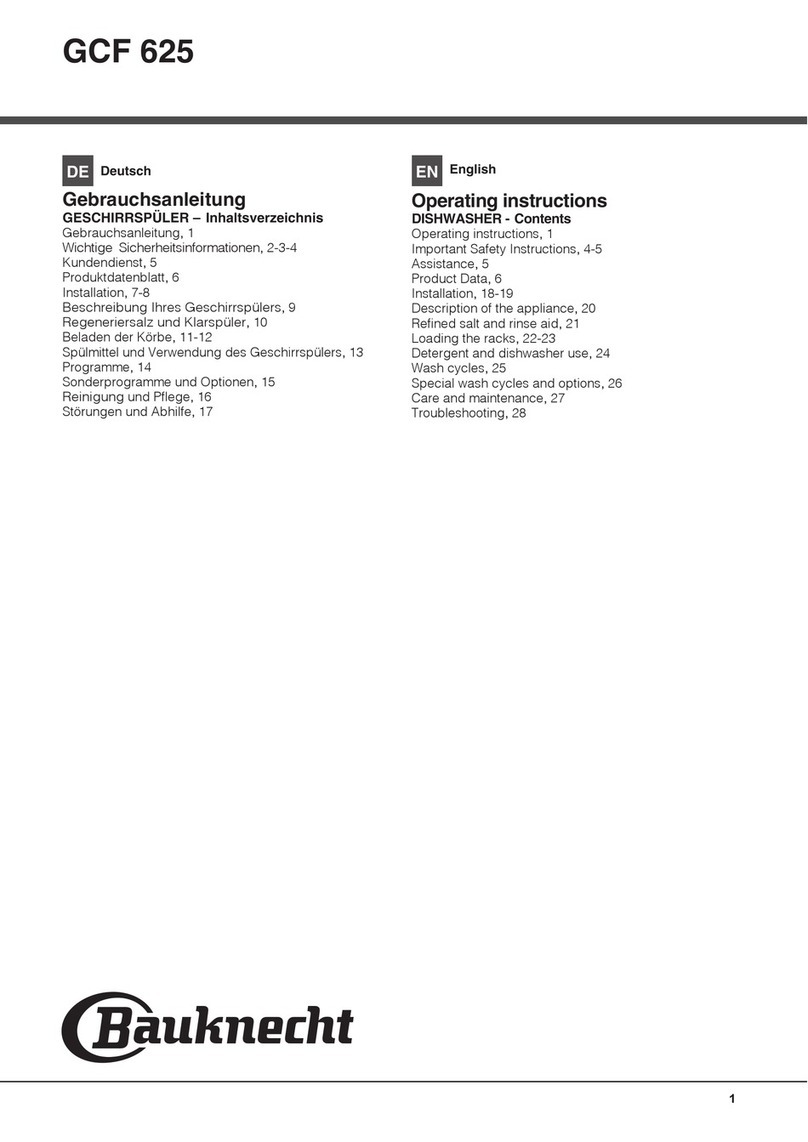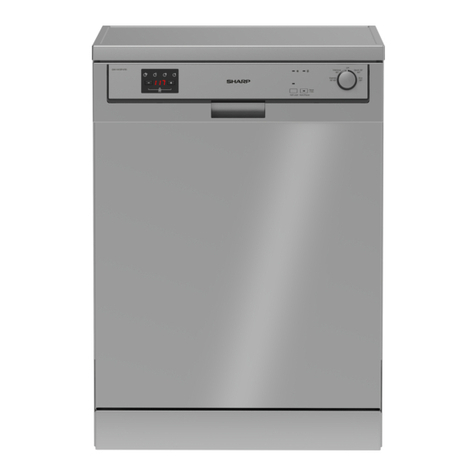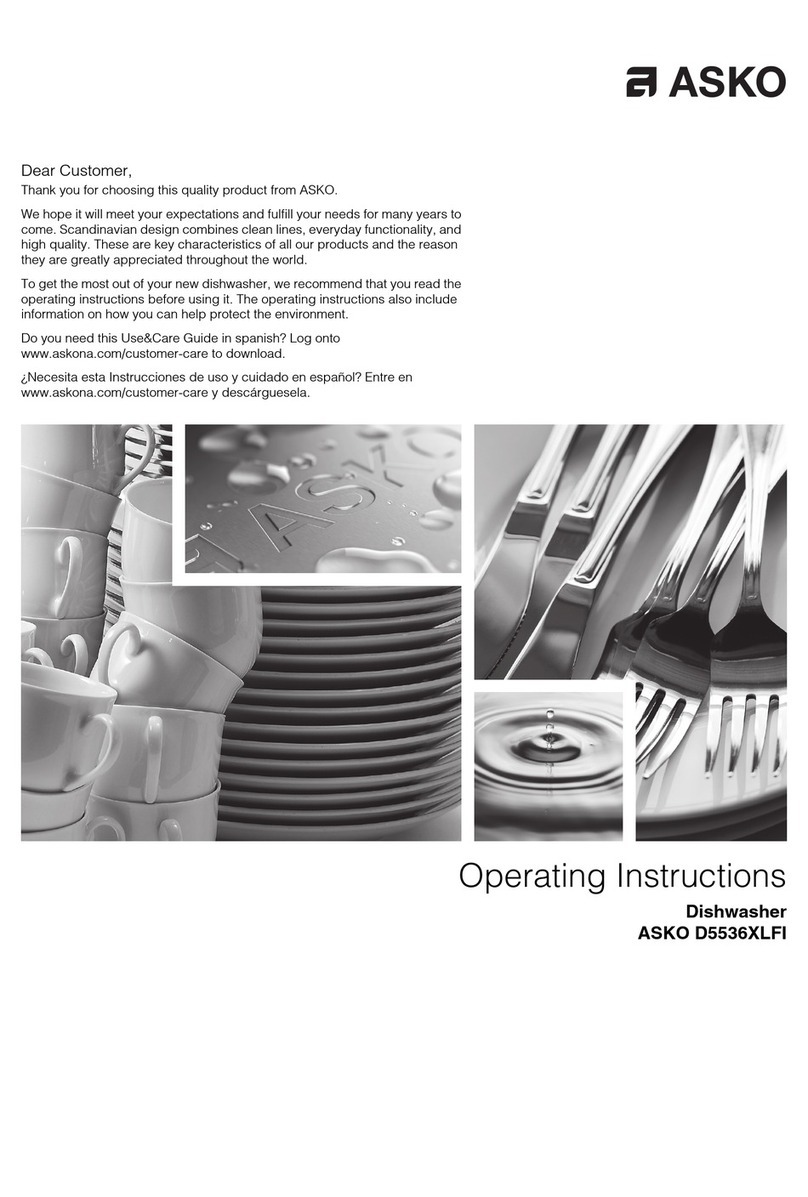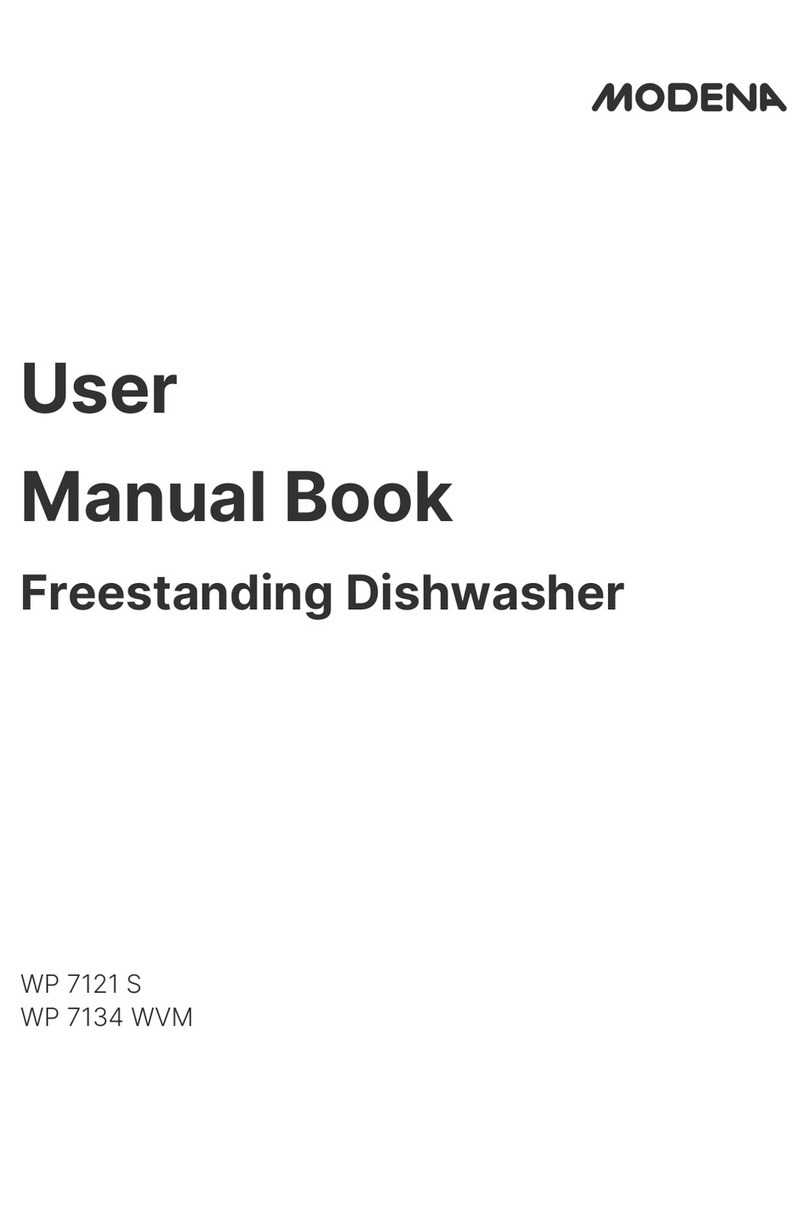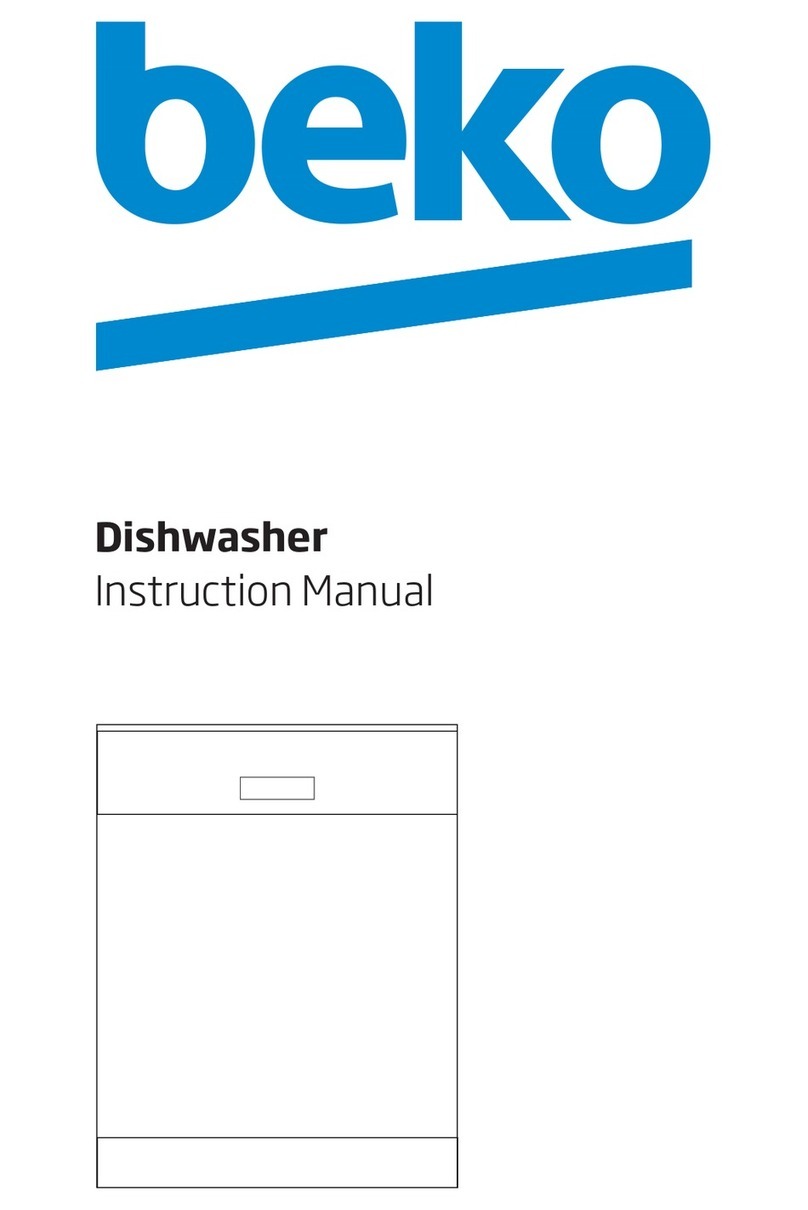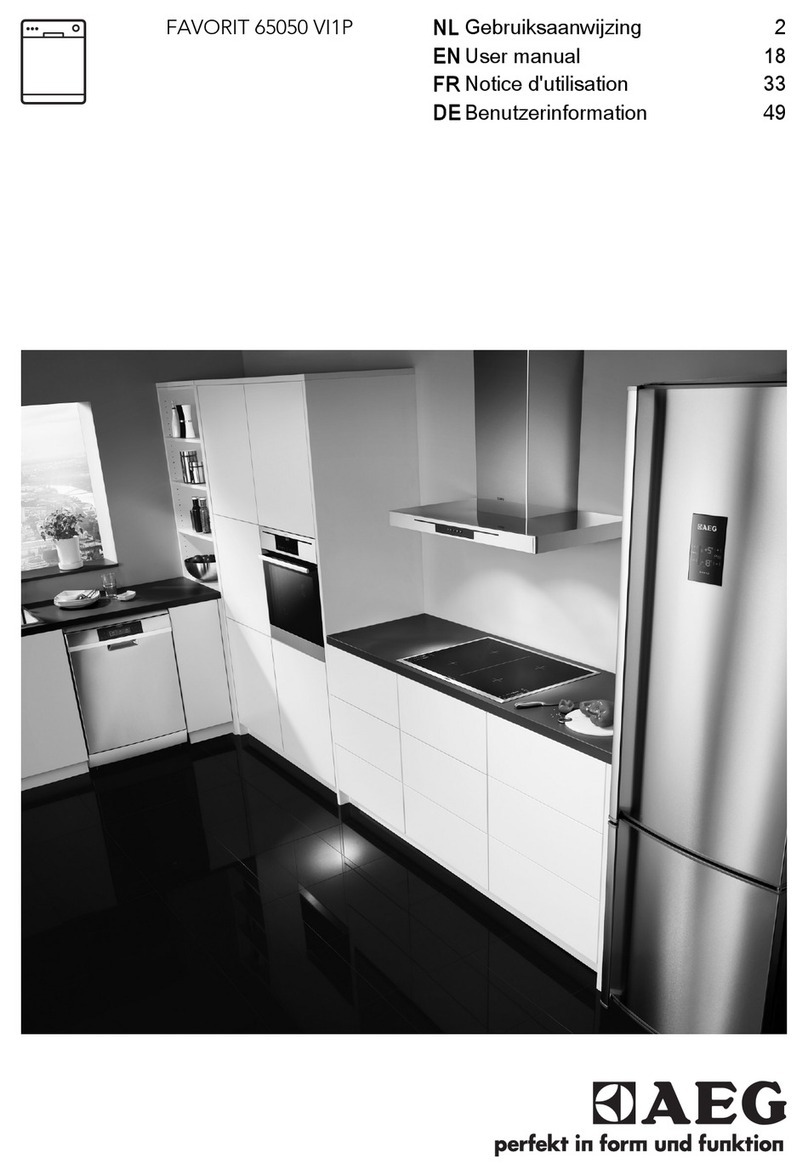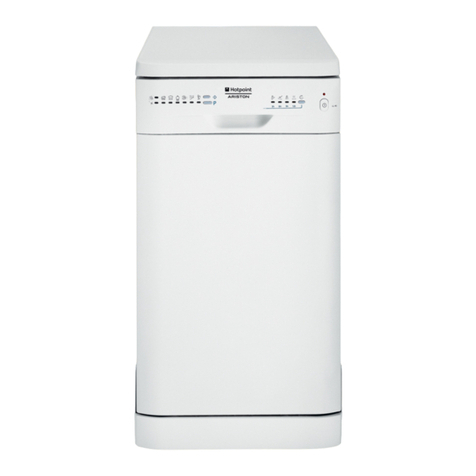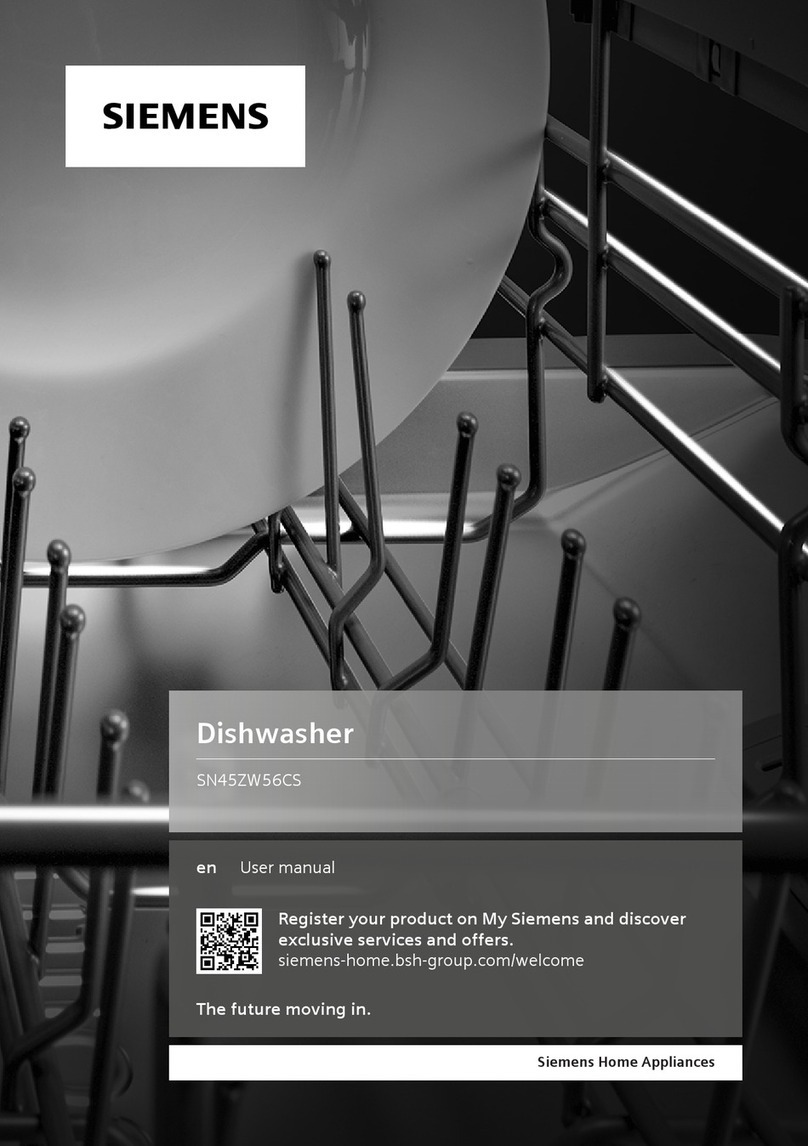EN
'
Rinse aid and refined salt
Only use products which have been
specifically designed for dishwashers.
o not use table salt or industrial salt, or
washing up liquid.
Follow the instructions given on the packaging.
If using a multi-functional product it is not necessary to add
rinse aid; however, we recommend that you add salt,
especially if you live in an area where the water is hard or
very hard. Follow the instructions given on the packaging.
If you do not add salt or rinse aid, the LOW
SALT* and LOW RINSE AI * indicator lights
remain lit.
Measuring out the rinse aid
Rinse aid makes it easier for the crockery to dry, as water
runs off surfaces more readily and therefore does not leave
streaks or marks.
The rinse aid dispenser should e filled:
When the LOW RINSE AID* indicator light on the control
panel is illuminated;
1. Open the dispenser y turning
the lid (G) in an anticlockwise
direction.
2. Pour in the rinse aid, making
sure it does not overflow from the
dispenser. If this happens, clean
the spill immediately with a dry
cloth.
3. Screw the lid ack on.
NEVER pour the rinse aid directly into the appliance tub.
Adjusting the amount of rinse aid
If you are not completely satisfied with the drying results, you
may adjust the quantity of rinse aid used. Use a screwdriver
to turn the dosage adjuster (F) to one of the 6 pre-set
positions (the default position is set to 4):
If there are streaks on the crockery, set the adjustment
device to a lower num er (1-3).
If drops of water remain on the crockery or if there are
limescale marks present after the cycle has finished, set the
adjuster to a higher num er (4-6).
Setting the water hardness
Every dishwasher is equipped with a water softener which, y
using refined salt designed especially for this type of
appliance, supplies water without limescale which is then used
to wash the crockery.
This dishwasher offers a setting which helps to reduce
pollution and optimises washing performance in accordance
with the water hardness level in your area. This information can
e o tained from the organisation which supplies your
household with water.
- Open the door and switch on the machine y pressing the
ON/OFF utton.
- Press the P utton and hold for approximately 5 seconds;
two short eeps will sound and the set hardness num er will
flash slowly on the display (the water softening system is set
to num er 3).
- Press the P utton repeatedly until the desired hardness
level has een reached (1-2-3-4-5* see Water hardness
table).
- To exit the function, wait approximately 30 seconds or press
another option utton, or switch off the machine using the ON/
OFF utton.
Even if using multi-functional ta lets, the salt dispenser should
still e filled.
(°dH = hardness measured in German degrees - °f =
hardness measured in French degrees - mmol/l = millimoles
per litre)
Measuring out the refined salt
In order to achieve the est possi le results using a wash
cycle, make sure that the dispenser is never empty. Refined
salt removes limescale from the water, thus avoiding the
formation of deposits on crockery.
The salt dispenser is located in the lower part of the
dishwasher (see Description) and should e filled:
When the green float* cannot e seen y simply looking at
the cap of the salt dispenser.
When the LOW SALT* indicator light on the control panel is
illuminated;
1. Remove the lower rack and
unscrew the container cap
(anticlockwise).
2. The first time you do this: fill the
water tank right up to its edge.
3. Position the funnel* (see figure) and
fill the salt container right up to its
edge (this should hold approximately
1 kg); it is not unusual for a little water to
leak out.
4. Remove the funnel* and wipe any salt residue away from
the opening; rinse the cap under running water and then
screw it on, the head facing downwards so as to let the water
flow out of the four cracks which are arranged in a star shape
on the lower part of the cap. (Salt cap with green float*)
It is advisable to perform this procedure every time you
add salt to the container.
Make sure the cap is screwed on tightly, so that no detergent
can get into the container during the wash cycle (this could
damage the water softener eyond repair).
When necessary, measure out the salt efore a wash
cycle so that any saline solution which has leaked out of the
salt dispenser is removed.
* Only availa le in selected models.
G
F
Water Hardness Table
°dH °fH mmol/l level
0 6 0 10 0 1 1
6 11 11 20 1.1 2 2
12 17 21 30 2.1 3 3
17 34 31 60 3.1 6 4
34 50 61 90 6.1 9 5*
For values between 0°f and 10°f, we do not
recommend the use of salt.
* this setting may cause a slight increase in the
duration of the cycle.
